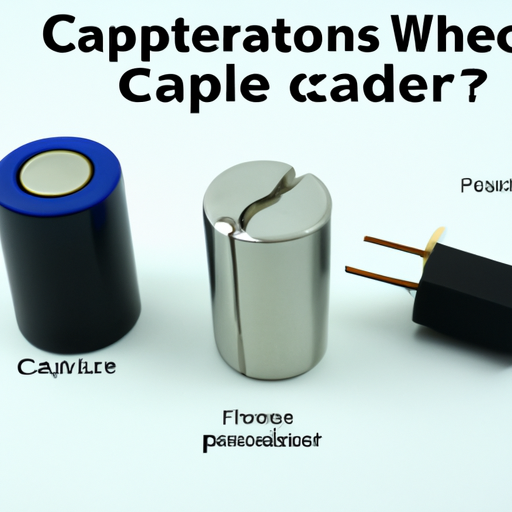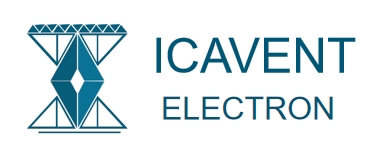What Components and Modules are Included in Three-Phase Capacitors?

I. Introduction
Three-phase capacitors are essential components in modern electrical systems, particularly in industrial and commercial applications. These capacitors play a crucial role in enhancing the efficiency and reliability of three-phase power systems. In this article, we will explore the components and modules that make up three-phase capacitors, their functions, and their significance in various applications. By understanding these elements, engineers and technicians can design and maintain more effective electrical systems.
II. Understanding Three-Phase Systems
A. Explanation of Three-Phase Electrical Systems
A three-phase electrical system consists of three alternating currents (AC) that are offset in time by one-third of a cycle, or 120 degrees. This configuration allows for a more balanced and efficient power distribution compared to single-phase systems. The primary characteristics of three-phase systems include:
1. **Constant Power Delivery**: Unlike single-phase systems, which experience fluctuations in power delivery, three-phase systems provide a continuous and stable power supply.
2. **Reduced Conductor Size**: Three-phase systems can transmit more power using smaller conductors, leading to cost savings in materials and installation.
3. **Improved Motor Performance**: Three-phase motors are generally more efficient and have a higher starting torque than their single-phase counterparts.
B. Role of Capacitors in Three-Phase Systems
Capacitors are integral to the operation of three-phase systems, serving several key functions:
1. **Power Factor Correction**: Capacitors help improve the power factor of electrical systems by compensating for the inductive loads that can cause phase shifts between voltage and current. A higher power factor leads to reduced energy losses and improved system efficiency.
2. **Voltage Stabilization**: Capacitors can stabilize voltage levels in three-phase systems, ensuring that equipment operates within specified voltage ranges and reducing the risk of damage.
3. **Harmonic Filtering**: Capacitors can mitigate the effects of harmonics generated by non-linear loads, improving the overall power quality in the system.
III. Basic Components of Three-Phase Capacitors
A. Capacitor Elements
The primary components of three-phase capacitors include the capacitor elements themselves, which consist of:
1. **Dielectric Materials**: The dielectric is the insulating material that separates the capacitor's electrodes. Common types of dielectrics used in three-phase capacitors include:
- **Polypropylene**: Known for its high dielectric strength and low loss factor, polypropylene is widely used in power capacitors.
- **Polyester**: While less efficient than polypropylene, polyester is often used in applications where cost is a concern.
The choice of dielectric material is critical, as it affects the capacitor's performance, including its voltage rating and energy loss.
2. **Electrodes**: The electrodes are conductive plates that store electrical energy. They can be made from various materials, including:
- **Aluminum**: Lightweight and cost-effective, aluminum is commonly used in capacitor construction.
- **Copper**: While more expensive, copper offers superior conductivity and is used in high-performance applications.
The design and material of the electrodes significantly influence the capacitor's efficiency and lifespan.
B. Housing and Enclosure
The housing of a three-phase capacitor serves to protect its internal components from environmental factors. Key considerations include:
1. **Purpose of Housing**: The housing prevents physical damage and shields the capacitor from moisture, dust, and other contaminants that could affect performance.
2. **Materials Used**: Common materials for capacitor housings include metal and plastic. Metal housings provide better durability and heat dissipation, while plastic housings are lighter and more cost-effective.
3. **Environmental Considerations**: Capacitors must be designed to withstand varying environmental conditions, such as temperature fluctuations and humidity levels, to ensure reliable operation.
C. Terminals and Connectors
The terminals and connectors of three-phase capacitors are crucial for establishing secure electrical connections. Key aspects include:
1. **Types of Terminals**: Common terminal types include screw and bolt connections, which provide reliable and robust electrical contact.
2. **Importance of Secure Connections**: In three-phase systems, secure connections are vital to prevent arcing, overheating, and potential system failures.
IV. Modules and Additional Components
A. Capacitor Banks
Capacitor banks are assemblies of multiple capacitors connected together to enhance the overall capacitance and performance of a three-phase system. Key points include:
1. **Definition and Purpose**: Capacitor banks are used to improve power factor, stabilize voltage, and provide reactive power support in three-phase systems.
2. **Configuration of Capacitor Banks**: Capacitor banks can be configured in different ways, such as delta or wye configurations, depending on the specific application and system requirements.
B. Control Modules
Control modules are essential for managing the operation of capacitor banks and ensuring optimal performance. Key features include:
1. **Role of Control Modules**: These modules monitor system parameters and adjust the operation of capacitors to maintain desired power factor levels and voltage stability.
2. **Types of Control Systems**: Control systems can be manual, allowing operators to adjust settings as needed, or automatic, using sensors and algorithms to optimize performance without human intervention.
C. Protection Devices
Protection devices are critical for safeguarding capacitors and the overall electrical system. Important components include:
1. **Fuses and Circuit Breakers**: These devices protect against overcurrent conditions that could damage capacitors and other system components.
2. **Surge Protection Devices**: Surge protectors help prevent damage from voltage spikes caused by lightning strikes or switching operations.
3. **Importance of Protection Devices**: Implementing protection devices is essential for preventing failures and ensuring the longevity of three-phase capacitors.
V. Types of Three-Phase Capacitors
Three-phase capacitors come in various types, each designed for specific applications:
A. Fixed Capacitors
Fixed capacitors have a predetermined capacitance value and are commonly used for power factor correction in industrial applications. They are reliable and cost-effective for applications where capacitance requirements do not change.
B. Variable Capacitors
Variable capacitors allow for adjustable capacitance, making them suitable for applications where power factor correction needs to be fine-tuned. They are often used in tuning circuits and specialized applications.
C. Power Factor Correction Capacitors
These capacitors are specifically designed to improve the power factor of electrical systems. They are typically used in industrial settings to reduce energy costs and enhance system efficiency.
VI. Applications of Three-Phase Capacitors
Three-phase capacitors find applications across various sectors, including:
A. Industrial Applications
1. **Motors and Drives**: Capacitors are used to improve the efficiency of three-phase motors and variable frequency drives (VFDs), enhancing performance and reducing energy consumption.
2. **Transformers**: Capacitors help stabilize voltage levels in transformer applications, ensuring reliable operation.
B. Commercial Applications
1. **HVAC Systems**: Capacitors are used in heating, ventilation, and air conditioning systems to improve energy efficiency and maintain stable operation.
2. **Lighting Systems**: Capacitors help reduce energy consumption and improve power quality in commercial lighting applications.
C. Renewable Energy Systems
1. **Wind and Solar Energy Applications**: Capacitors play a vital role in renewable energy systems by improving power quality and stabilizing voltage levels, ensuring efficient energy conversion and distribution.
VII. Conclusion
In summary, three-phase capacitors are composed of various components and modules that work together to enhance the performance of electrical systems. Understanding these components is crucial for effective system design and maintenance. As technology continues to evolve, we can expect advancements in three-phase capacitor technology, leading to improved efficiency, reliability, and applications in emerging fields such as renewable energy.
VIII. References
For further exploration of three-phase capacitors and their components, consider the following resources:
1. "Power Factor Correction: Principles and Practice" by John Smith
2. "Capacitors in Power Systems" by Michael Johnson
3. IEEE Standards on Capacitor Applications and Design
By delving into these resources, engineers and technicians can deepen their understanding of three-phase capacitors and their critical role in modern electrical systems.
What Components and Modules are Included in Three-Phase Capacitors?

I. Introduction
Three-phase capacitors are essential components in modern electrical systems, particularly in industrial and commercial applications. These capacitors play a crucial role in enhancing the efficiency and reliability of three-phase power systems. In this article, we will explore the components and modules that make up three-phase capacitors, their functions, and their significance in various applications. By understanding these elements, engineers and technicians can design and maintain more effective electrical systems.
II. Understanding Three-Phase Systems
A. Explanation of Three-Phase Electrical Systems
A three-phase electrical system consists of three alternating currents (AC) that are offset in time by one-third of a cycle, or 120 degrees. This configuration allows for a more balanced and efficient power distribution compared to single-phase systems. The primary characteristics of three-phase systems include:
1. **Constant Power Delivery**: Unlike single-phase systems, which experience fluctuations in power delivery, three-phase systems provide a continuous and stable power supply.
2. **Reduced Conductor Size**: Three-phase systems can transmit more power using smaller conductors, leading to cost savings in materials and installation.
3. **Improved Motor Performance**: Three-phase motors are generally more efficient and have a higher starting torque than their single-phase counterparts.
B. Role of Capacitors in Three-Phase Systems
Capacitors are integral to the operation of three-phase systems, serving several key functions:
1. **Power Factor Correction**: Capacitors help improve the power factor of electrical systems by compensating for the inductive loads that can cause phase shifts between voltage and current. A higher power factor leads to reduced energy losses and improved system efficiency.
2. **Voltage Stabilization**: Capacitors can stabilize voltage levels in three-phase systems, ensuring that equipment operates within specified voltage ranges and reducing the risk of damage.
3. **Harmonic Filtering**: Capacitors can mitigate the effects of harmonics generated by non-linear loads, improving the overall power quality in the system.
III. Basic Components of Three-Phase Capacitors
A. Capacitor Elements
The primary components of three-phase capacitors include the capacitor elements themselves, which consist of:
1. **Dielectric Materials**: The dielectric is the insulating material that separates the capacitor's electrodes. Common types of dielectrics used in three-phase capacitors include:
- **Polypropylene**: Known for its high dielectric strength and low loss factor, polypropylene is widely used in power capacitors.
- **Polyester**: While less efficient than polypropylene, polyester is often used in applications where cost is a concern.
The choice of dielectric material is critical, as it affects the capacitor's performance, including its voltage rating and energy loss.
2. **Electrodes**: The electrodes are conductive plates that store electrical energy. They can be made from various materials, including:
- **Aluminum**: Lightweight and cost-effective, aluminum is commonly used in capacitor construction.
- **Copper**: While more expensive, copper offers superior conductivity and is used in high-performance applications.
The design and material of the electrodes significantly influence the capacitor's efficiency and lifespan.
B. Housing and Enclosure
The housing of a three-phase capacitor serves to protect its internal components from environmental factors. Key considerations include:
1. **Purpose of Housing**: The housing prevents physical damage and shields the capacitor from moisture, dust, and other contaminants that could affect performance.
2. **Materials Used**: Common materials for capacitor housings include metal and plastic. Metal housings provide better durability and heat dissipation, while plastic housings are lighter and more cost-effective.
3. **Environmental Considerations**: Capacitors must be designed to withstand varying environmental conditions, such as temperature fluctuations and humidity levels, to ensure reliable operation.
C. Terminals and Connectors
The terminals and connectors of three-phase capacitors are crucial for establishing secure electrical connections. Key aspects include:
1. **Types of Terminals**: Common terminal types include screw and bolt connections, which provide reliable and robust electrical contact.
2. **Importance of Secure Connections**: In three-phase systems, secure connections are vital to prevent arcing, overheating, and potential system failures.
IV. Modules and Additional Components
A. Capacitor Banks
Capacitor banks are assemblies of multiple capacitors connected together to enhance the overall capacitance and performance of a three-phase system. Key points include:
1. **Definition and Purpose**: Capacitor banks are used to improve power factor, stabilize voltage, and provide reactive power support in three-phase systems.
2. **Configuration of Capacitor Banks**: Capacitor banks can be configured in different ways, such as delta or wye configurations, depending on the specific application and system requirements.
B. Control Modules
Control modules are essential for managing the operation of capacitor banks and ensuring optimal performance. Key features include:
1. **Role of Control Modules**: These modules monitor system parameters and adjust the operation of capacitors to maintain desired power factor levels and voltage stability.
2. **Types of Control Systems**: Control systems can be manual, allowing operators to adjust settings as needed, or automatic, using sensors and algorithms to optimize performance without human intervention.
C. Protection Devices
Protection devices are critical for safeguarding capacitors and the overall electrical system. Important components include:
1. **Fuses and Circuit Breakers**: These devices protect against overcurrent conditions that could damage capacitors and other system components.
2. **Surge Protection Devices**: Surge protectors help prevent damage from voltage spikes caused by lightning strikes or switching operations.
3. **Importance of Protection Devices**: Implementing protection devices is essential for preventing failures and ensuring the longevity of three-phase capacitors.
V. Types of Three-Phase Capacitors
Three-phase capacitors come in various types, each designed for specific applications:
A. Fixed Capacitors
Fixed capacitors have a predetermined capacitance value and are commonly used for power factor correction in industrial applications. They are reliable and cost-effective for applications where capacitance requirements do not change.
B. Variable Capacitors
Variable capacitors allow for adjustable capacitance, making them suitable for applications where power factor correction needs to be fine-tuned. They are often used in tuning circuits and specialized applications.
C. Power Factor Correction Capacitors
These capacitors are specifically designed to improve the power factor of electrical systems. They are typically used in industrial settings to reduce energy costs and enhance system efficiency.
VI. Applications of Three-Phase Capacitors
Three-phase capacitors find applications across various sectors, including:
A. Industrial Applications
1. **Motors and Drives**: Capacitors are used to improve the efficiency of three-phase motors and variable frequency drives (VFDs), enhancing performance and reducing energy consumption.
2. **Transformers**: Capacitors help stabilize voltage levels in transformer applications, ensuring reliable operation.
B. Commercial Applications
1. **HVAC Systems**: Capacitors are used in heating, ventilation, and air conditioning systems to improve energy efficiency and maintain stable operation.
2. **Lighting Systems**: Capacitors help reduce energy consumption and improve power quality in commercial lighting applications.
C. Renewable Energy Systems
1. **Wind and Solar Energy Applications**: Capacitors play a vital role in renewable energy systems by improving power quality and stabilizing voltage levels, ensuring efficient energy conversion and distribution.
VII. Conclusion
In summary, three-phase capacitors are composed of various components and modules that work together to enhance the performance of electrical systems. Understanding these components is crucial for effective system design and maintenance. As technology continues to evolve, we can expect advancements in three-phase capacitor technology, leading to improved efficiency, reliability, and applications in emerging fields such as renewable energy.
VIII. References
For further exploration of three-phase capacitors and their components, consider the following resources:
1. "Power Factor Correction: Principles and Practice" by John Smith
2. "Capacitors in Power Systems" by Michael Johnson
3. IEEE Standards on Capacitor Applications and Design
By delving into these resources, engineers and technicians can deepen their understanding of three-phase capacitors and their critical role in modern electrical systems.













